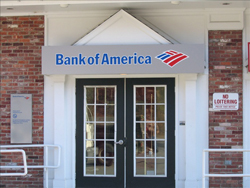CHARLENEM

LOS ANGELES (FinalCall.com) – The California Department of Corrections and Rehabilitation (CDCR) has been releasing inmates from its prisons under a federal order to reduce overcrowding but some activists and community-based organizations remain confused about the plan and how it will be implemented.
Governor Jerry Brown passed the 2011 Public Safety Realignment Plan earlier this year with the goal of cutting costs, and reducing overcrowding and recidivism.
“We realized that last year, 47,000 offenders served 90 days or less in state prison. They’re a part of this revolving door or returning of offenders to the system,” said CDCR Secretary Matthew Cate at a town hall meeting called by homeless advocates. Inmate releases started October 1, with 30,000 expected to be released by December and 30,000 over the next two years.
According to Corrections Secy. Cate, the first step is for the department to reduce its overall population by some 30,000 within two years–10,000 by this Christmas. When inmate sentences are up, half will be on probation and half on parole, instead of everyone falling under parole’s supervision, he explained.
Low level offenders that have never committed serious or violent crimes, and whose current offenses are non-serious, non-violent, or non-sex crimes, will serve the rest of their sentences in local county jails, instead of state prisons. Anyone who violates parole will be sent to county jails instead of prisons. But petitions for resentencing and releases are granted by the courts.
Corrections Secy. Cate said the changes should clear up misconceptions that means inmates will be released from prison early.
Emily Fields, of the Black Business and Professional Association of Long Beach, asked about inmates wrongly charged with felonies for petty crimes and then jailed under the state’s Three Strikes Law. She asked Corrections Secy. Cate if the department would review such cases for possible release and to her dismay, he replied, yes.
Under Three Strikes, anyone convicted of two felonies for violent or serious crimes, and commits a similar crime, is sentenced to 25 years to life in prison for the third “strike.”
Critics argue the law has been responsible for sending thousands of people to prison with long sentences for petty crimes. In one instance, a man was sentenced under Three Strikes for stealing a slice of pizza.
Corrections Secy. Cate said Los Angeles has already begun to look at Three Strikes cases and in the Bay Area, the CDCR has entered into a partnership with Stanford Law School to see if any inmates were sentenced on petty, small crime offenses and may be eligible for possible resentencing.
The department has also begun reviewing the files of female inmates because so few of their cases involve violence, he continued.
“I was surprised that he said they are going to look at those cases because that wasn’t what they stated originally when the plan was first mentioned. I was really glad to hear that because that is a major part of the overcrowding,” Ms. Fields told The Final Call.
Terry McDonald, CDCR undersecretary, said the plan is the largest shift in law enforcement that California, and most likely the nation, has ever encountered.
There are different ways for local officials to manage offenders, including placement in substance abuse programs, employment programs, mental health treatment, or on Global Satellite monitoring–but not everyone needs to be sitting in jail, she stated.
Some activists said the information shared by the panel was appreciated but much was still lacking.
Activists knew the plan stems from two lawsuits over poor medical and mental health care inmates received. But activists said many returning inmates will undoubtedly end up on Skid Row.
Activist “General Jeff” advocates for men, women and children who either live, congregate or wander within the 52-block area of downtown Los Angeles. Skid Row is considered the “homeless capitol of America,” he said, and its cluster of emergency shelters, transitional and permanent housing, and health care services are already stretched too thin.
“As a community activist that keeps my finger on the pulse of not only the Skid Row community, but the downtown community, once I heard of this release program and weighed the pros and cons, I realized that the cons outweighed the pros if there wasn’t appropriate measures taken by the leadership and city officials,” Mr. Jeff told The Final Call.
“The pros are obviously easing the overcrowding in prisons, but the cons include the fact that structure is lacking on the back end of the program regarding issues such as housing and other services parolees will need once they are released.”
Mr. Jeff coordinated the “What’s the Plan?” town hall meeting to get some answers. The session was moderated by Assemblyman Mike Davis and included L.A. County Sheriff Lee Baca, Los Angeles Police Department Deputy Chief Earl Paysinger, Dr. V. Diane Woods (public health researcher), Dr. Victoria Simon (forensic psychologist), and Ed Johnson (Senior Probation Director for L.A. County Probation Department).
Sharon Yates, a board member of the National Alliance for Mental Illness Urban Los Angeles, expressed concern that prisoners are being released into a city that has no place for them to live. “Temporary and transitional housing is 90 days but what about permanent housing,” she asked the experts.
According to Nancy Carter, former executive director of NAMI Inglewood and co-founder of NAMI Urban Los Angeles, statistics long predicted that at some point, the prisons would be overburdened with people who really didn’t belong there.
“We closed the state hospitals some time ago, with the promise that there would be community services but those services have been few and far between. … Now, where we put everybody, especially Black folks, is in jail and prison, and they roll right back into the streets again on Skid Row or where homeless populations end up,” Ms. Carter said.












